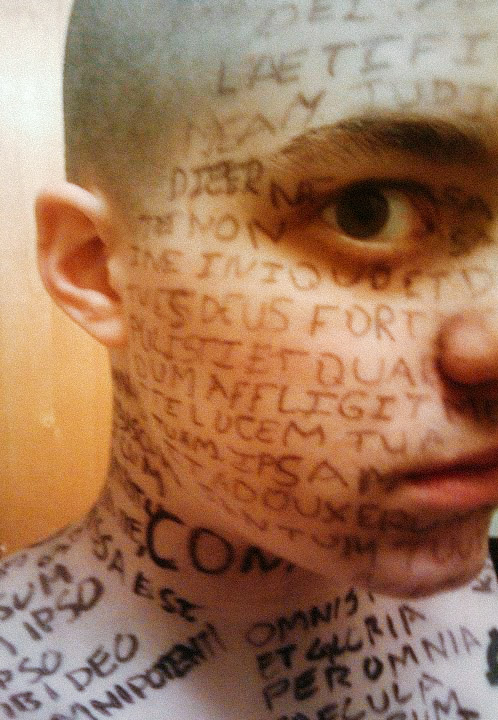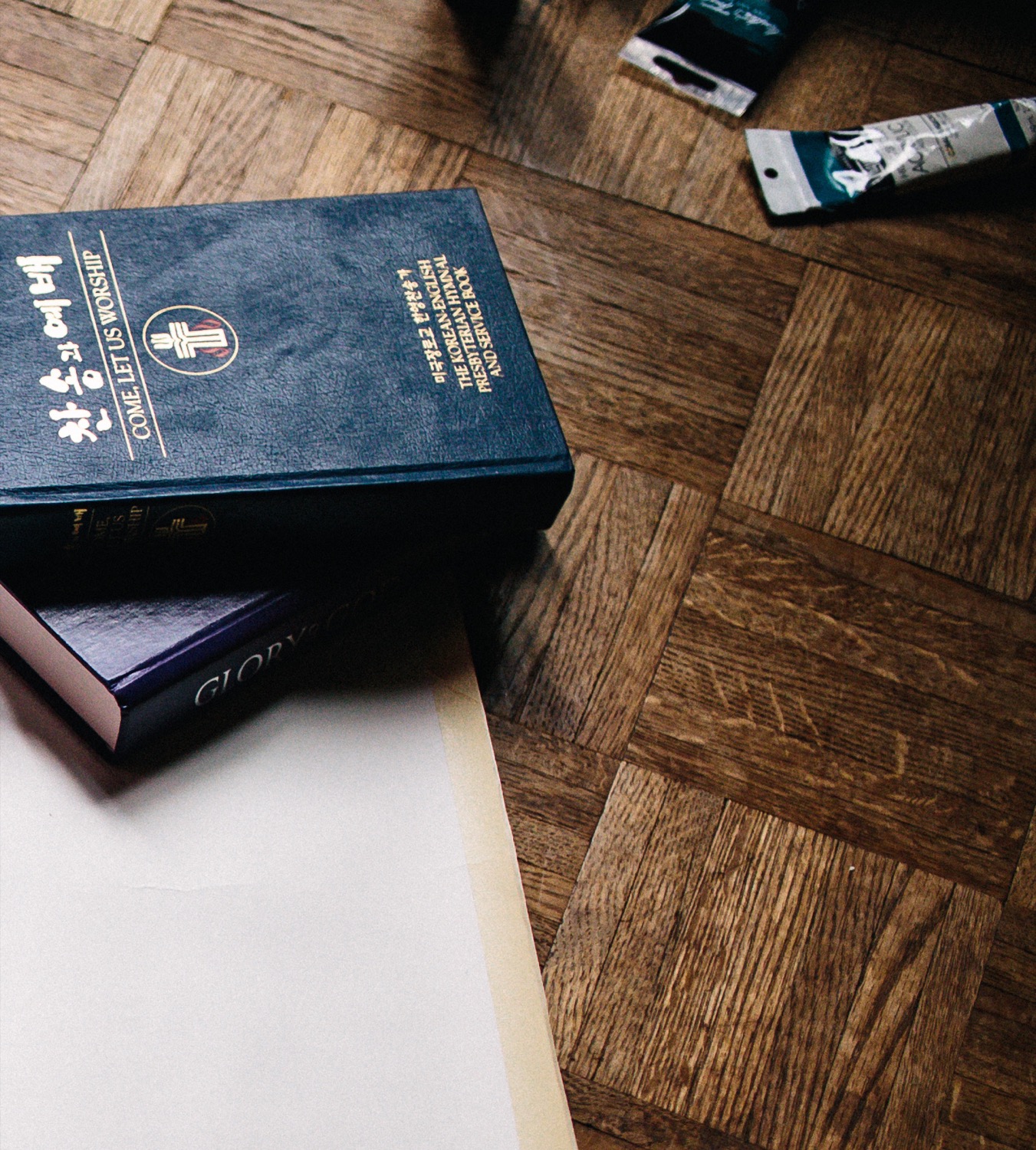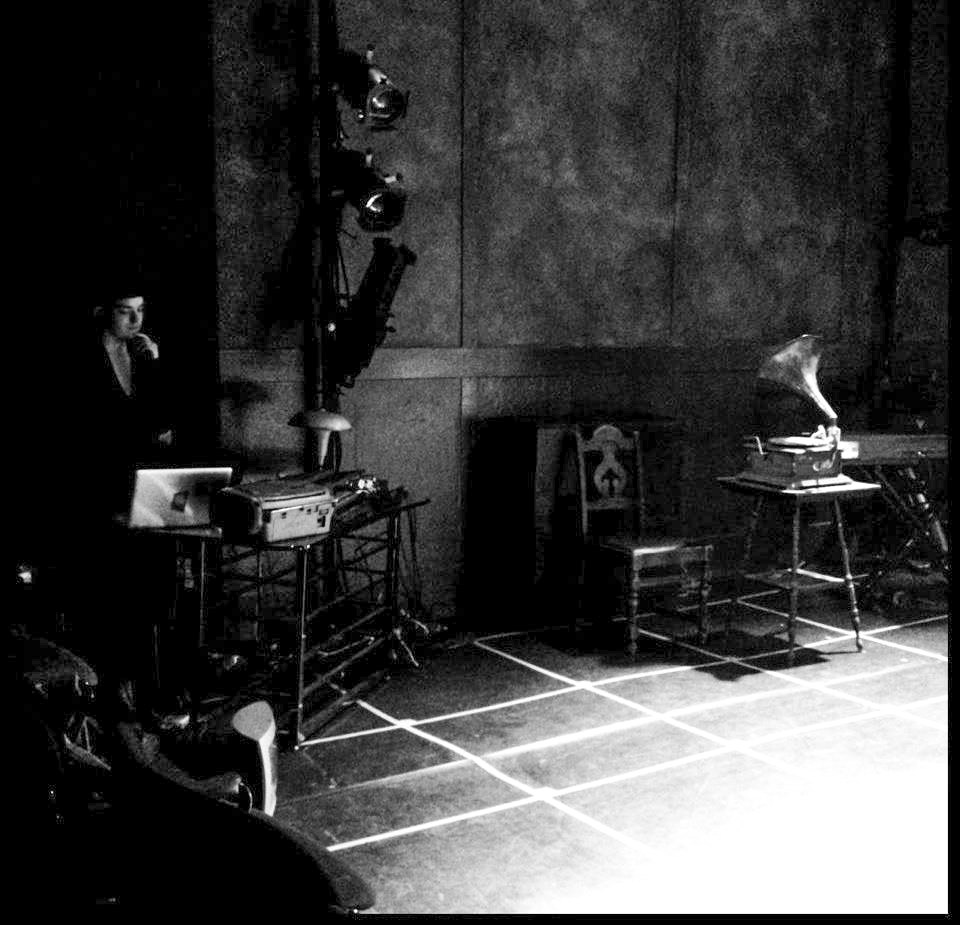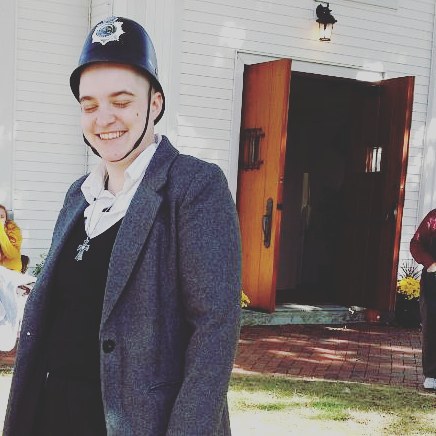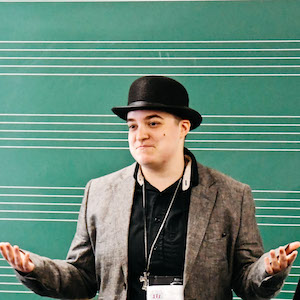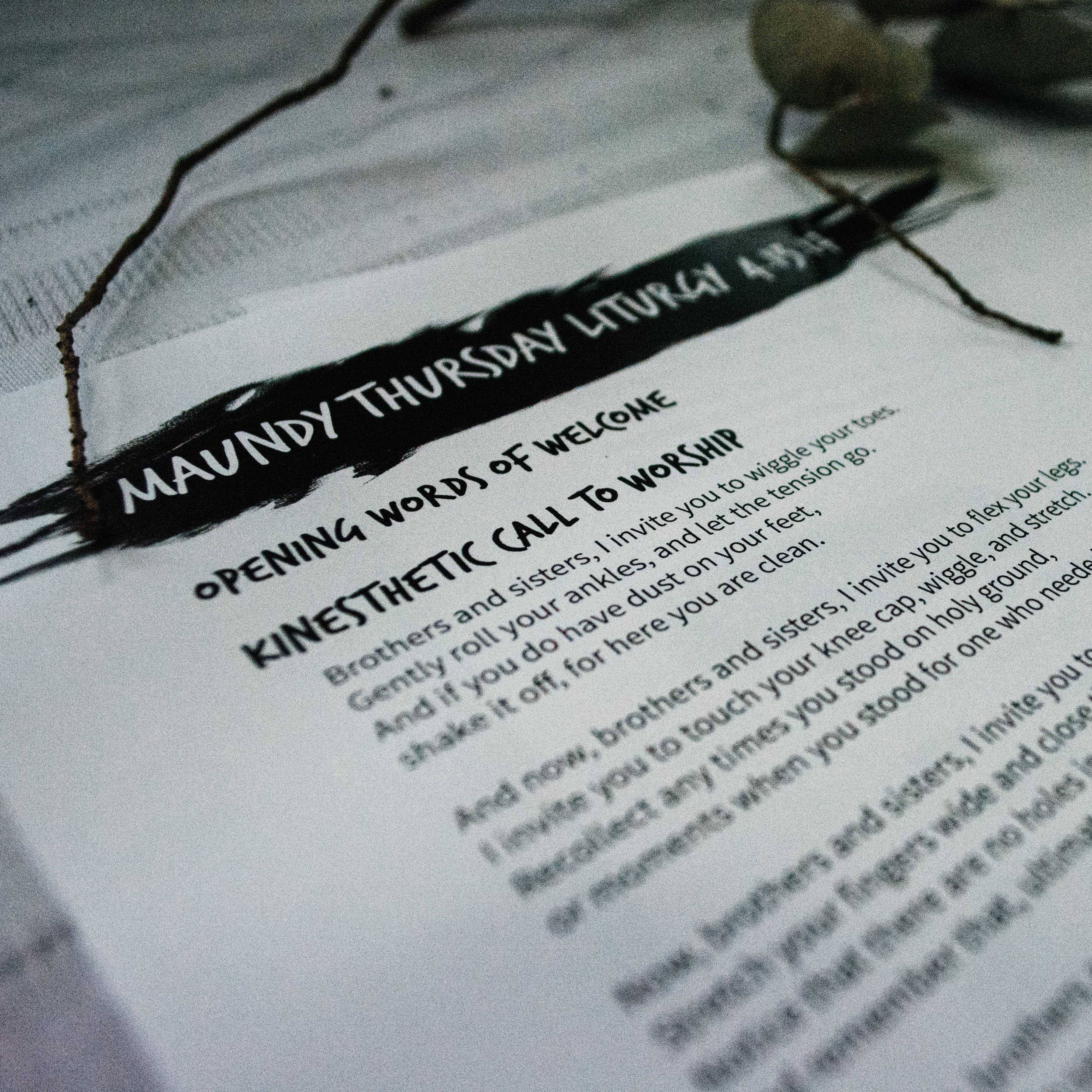queeringlent—wholeheARTed guest, Slats Toole
This past Lent, our wholeheARTed guest for this week, Slats Toole, embarked on a daily spiritual practice of writing poems and then sharing them publicly via Facebook and social media. Each day, these poems broke beyond the noise and frenzy of social media to offer moments of truth so visceral it's as if you could feel the poems lift from the screen and come to life. So many of us were moved by these poems, as they arise from the personal, but point us toward the whole—of the journey of faith, of our identity in God, of life itself.
We are so grateful to have Slats sharing more about their creative process and pursuits. As a recent Princeton seminary grad, Slats shares their gifts widely through hymnody, preaching, poetry, and sound/theatrical design. They also work to resource and empower the Church at-large to break beyond the binary of gender in liturgy and worship. If you'd like to learn more, download Slat's recent piece, "Breaking the Binary—Language for a Wider Welcome."
You can also purchase your own copy of Slat's Lenten poems, queeringlent on Amazon or CreateSpace. Read on below for more, and catch up on our other wholeheARTed guests here.
SA: When did you first consider yourself an artist or creative person?
ST: I grew up writing and singing (I'm the child of two church musicians), but I began to dip my toes into self-identifying as an artist in high school when I was a musical theater major at an arts/technology-based high school. By the time I graduated, I was making plans to pursue a career as a theater director, but didn't completely embrace the term until undergrad. I was a theater major, and my undergraduate program was based on the premise that all of us had something to say to the world, and it was the school's job to poke us until we 1) realized we had something to say, and 2) clamored for language with which to say it. They didn’t start with technique, they didn’t hand us tools until the very last minute—which meant we were creating our own technique as we went along, and used the tools we were given in new ways. That’s when I really began to live a life of constantly pushing forms and creating new ones to be able to express what I was trying to express. To me, that is what it means to be an artist.
SA: Tell us about the art you create or how you express yourself creatively.
ST: I work primarily with sounds and words. I work professionally as a director and sound designer for live theater (and I occasionally find myself doing performance art). And I write, generally in some poetic fashion. My sound design work ranges everything from compiling pre-existing sounds to recording sounds to creating mixes through sampling to composition to creating sound live in the space. My favorite work usually is live sound, using everyday objects to create a musical landscape.
As far as written word, I primarily write free verse poetry, though I occasionally work in metered forms for hymn texts. My free verse poetry is the work it’s been harder for me to claim as art. It tends to be intensely personal and almost feels like vomiting onto the page . . . and I have a hard time claiming my emotions as valid or useful to anyone besides myself. I started this kind of writing as I was working to rebuild my faith after several years of agnosticism. These poems became a way for me to explore this God I was beginning to know again, and record my journey. I’d write when I had something that I couldn’t get out any other way. I rarely let anyone see these pieces because they were so intimate.
After graduating from seminary, I looked back at these poems and mourned a bit. I’d spent so much time in academia and I missed that creative connection to God, and so I made it my spiritual discipline to write a poem every day during Lent. Because I was also actively working through how to claim my gender identity in my faith in a way that wasn’t just permissive but celebratory, many of the poems were about that intersection, and they became the queeringlent poems.
“Because I was also actively working through how to claim my gender identity in my faith in a way that wasn’t just permissive but celebratory, many of the poems were about that intersection.”
queeringlent is available in paperback via Amazon and CreateSpace.
SA: What is your creative process like?
ST: I always start from a place of impulse. What does this feel like? What texture is it? What color is it? Outside or inside? Hot or cold? Salty or sweet? Mountains or beach? Where does it land in the body? Sometimes I gather images that resonate for a particular piece. I try to keep my intellect out of it—I have been taught my entire life to analyze, and when I start from that place, there’s a large part of myself I’m not engaging. Often, if I gather images as impulses, I’ll discover something I didn’t realize: all the images will have something in common (no humans, vertical lines, similar color scheme, etc.), which tells me something about this piece that is beginning to form.
After that, it’s drafting and editing. I don’t spend time trying to get it right the first time—I make a choice, and if it’s not the best one, I’ll see that pretty soon, and the information I get from that choice helps lead me to the final one.
SA: What does fear look like for you and how does it show up in your creative process?
ST: Fear rarely pops up for me in the moment of creation. The act of creation is an act of discovery—of finding the fit of words, or notes, or sounds. Often it's a process of learning new techniques to fit what I'm trying to do or say in that moment. The fear comes in the moments of letting go and letting the work be seen/heard. Whenever I design a show, no matter how confident I am in what I've done, I am a complete nervous wreck when the first audience comes in.
I just published queeringlent, and I didn’t allow myself to think about the fear until I approved the proof and let people know I’d published it. It’s hard for me to stop and think about the vulnerability in those poems being out in the world in such a public way, even though that’s part of the reason I began sharing them in the first place. I’m working through what it means to be vulnerable in pastoral leadership in a way that is honest and grounded, rather than burdensome and unhealthy. Making sharing the work be part of the discipline is one of the ways I’ve been exploring that.
SA: How do you push beyond fear and self-doubt when they emerge during the creative process?
ST: Deadlines and disciplines, to be honest. For my design work, eventually the show opens. For the queeringlent poems, I told myself I’d post one on Facebook every day, and that’s what I had to do. I give myself external consequences for not dealing with the fear. I also occasionally have friends yell at me, “YOUR WORK MATTERS STOP IT WITH THE FEAR.” I wish I had an answer to this that was, “here’s how I’ve worked through it and no longer encounter fear!” But . . . I’m not exactly there.
SA: How is your creativity connected to your faith?
ST: I believe that God is constantly reaching out to us to engage us in conversation and collaboration. I believe that the reason the Bible is so full of contradiction and tension is to invite us into imagination and discovery even within our sacred text. I believe that God speaks to us in ways that are not simply through our minds, but through our bodies, through our senses, through our intuition.
I also find myself articulating truths I didn’t know I held so close in the poems I write. I am often surprised at what I find on the page and how deeply it resonates with me. It feels like the Holy Spirit working to reveal things both about God and about myself to me, even though it's my own hand and my own words.
SA: How does creativity/art lead you to wholeness?
ST: Creativity has helped me embrace the parts of myself that I otherwise neglect. I had no idea how to work through and deal with my emotions (and I have a lot of FEELINGS) until I went to theater school. It helps me engage with the parts of me that don’t make “sense,” that can’t be intellectualized. Through creativity I am able to name and express parts of myself I didn’t even realize existed until I saw them staring back at me on a page. It’s how I’m able to connect with the whole of who God made me to be.
Having gone through many different periods of my life, hopping around from job to job and making drastic vocational changes, like the turn from freelance theater work to seminary, I often find myself reconciling who I am, where I’ve been, and what I have gained/lost in any given moment. I think a lot about the Gospel of John’s telling of the feeding of the five thousand, and how Jesus instructs the disciples to gather the broken pieces so that nothing may be lost. I am comforted by the idea that all of the pieces in my life are being gathered together by Christ, and none of them will ever be lost. Art is part of that gathering for me. It helps me make sense of how all of the pieces of my life come together, even if just for a moment.
one.
i have never once forgotten
that i am dust.
when he was a boy,
my father thought he was
invincible.
he remembers the moment he realized:
he could die.
and one day, he would die.
not me.
i live in a body
the world is determined to destroy.
they erase my image in the mirror
they attack me with the pictures
of what i "should" be
they fence me in and lock me out
they hand me the tools to do it myself
(because that's so much cleaner)
but if they need to,
they'll just shoot me.
i have always known this
as long as i can remember.
and i am caught, occasionally
by the world's undertow--
which is stronger than you could imagine--
which pulls bodies like mine under,
and never lets us come up for air.
i have stared death in the face and said,
"please."
You are not the one who wants me dead--
You are the one who wants me alive,
and has fought for my life for years.
even when i have no idea why,
it has always been You, insistent and pleading,
pulling me towards life.
the truth i wear on my forehead today is this:
i live in a body made of ashes.
it is at once fragile and resilient--
it is easily torn apart
but never destroyed.
it is built from the ruins.
it carries with it the history of generations,
and incubates a new creation.
it is death
and it is life,
and it is Yours.
—Slats Toole, from queeringlent
Slats Toole
Slats (they/them/theirs) is a queer/trans/nonbinary Presbyterian. They hold a Bachelor of Fine Arts in Drama and a Master of Divinity and most often work as a director, sound designer, writer, and/or pastor. They spend much of their time working toward claiming queer/trans space in Christianity, both through creating queer spaces and through educating the cisgender church. They are a member of the Presbyterian Church (USA) and you have probably met them at Montreat. They deeply love liturgy and hymnody, and their queer Lenten poetry book is available on Amazon.


